Tomb 85
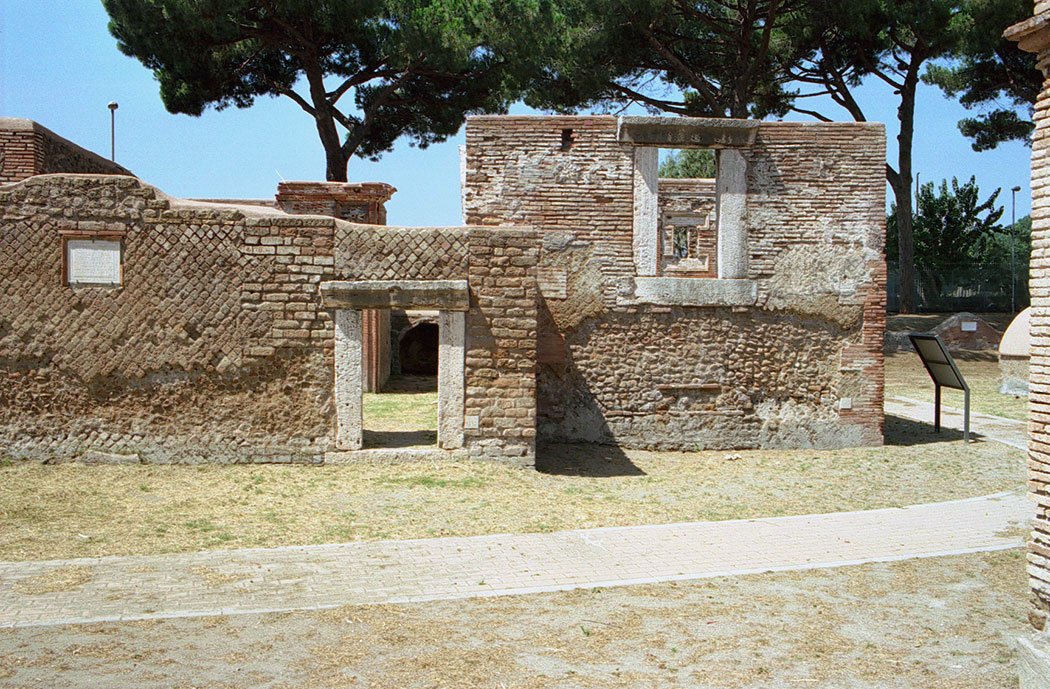
Left the entrance of the enclosure of tomb 86.
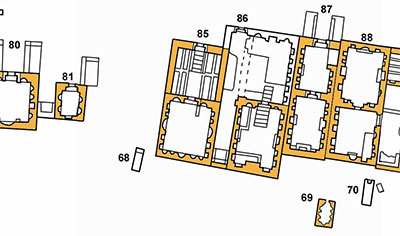 Tomb 85 is the first of a group of tombs separated from the others by a small open area. The group consists of seven tombs, some with a biclinium, others with an enclosure.
Tomb 85 is the first of a group of tombs separated from the others by a small open area. The group consists of seven tombs, some with a biclinium, others with an enclosure.
Tomb 85 is one of the oldest and has an enclosure that was built later.
Above the entrance of the burial chamber is a triangular tympanum supported by two columns. The inscription has disappeared.
The burial chamber itself is organized as a columbarium with aediculae flanked by series of small, semicircular niches. Below these niches are small, blank marble plates meant for the name of the deceased. In the niches and next to the windows are still traces of green and red decoration.
Very soon after the building of the burial chamber, burial places were dug under the mosaic floor.
The terracotta sarcophagi and the tombs "alla cappuccina" placed down there did not leave much of the floor.
The burial chamber dates back to 120-130 AD.
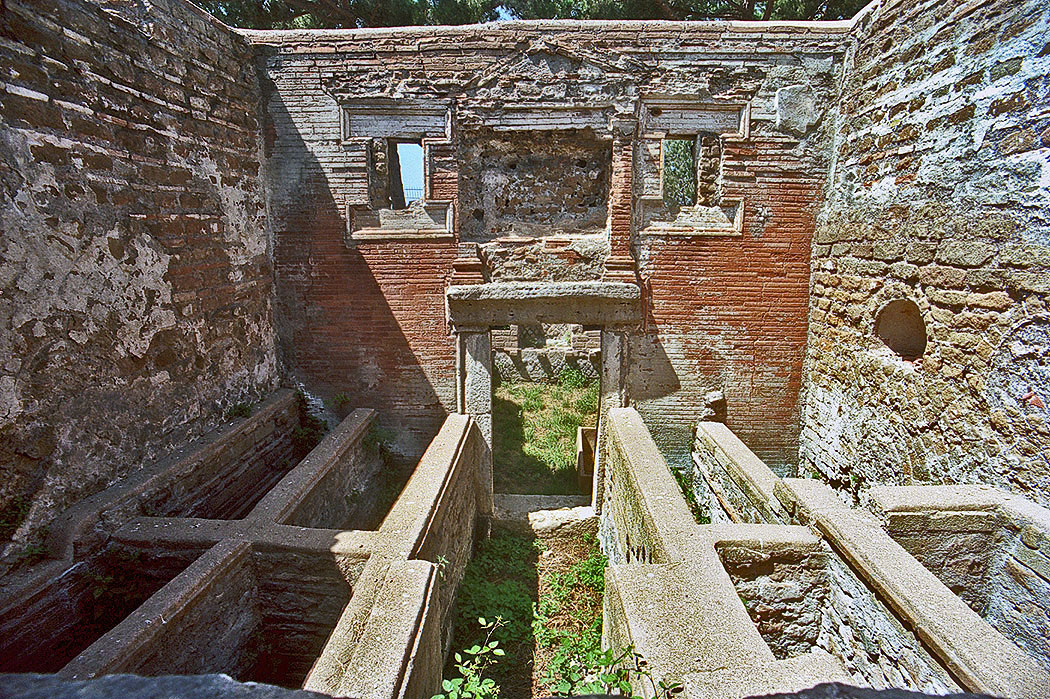
The original entrance of the enclosure was placed in the southern, left wall.
When in about 150 AD the enclosure of tomb 86 was built, the old entrance of tomb 85 was closed and a new one appeared in the wall facing the Via Severiana.
The enclosure, first used as a meeting place, had benches alongside the full lenght of the side walls. This is by the way one of the rare examples of funeral banquet areas inside a tomb (see also tomb 54).
Later the enclosure was re-organized, first as a columbarium and soon, on and beneath the floor, for inhumation.
Probably in the third century AD the walls of the enclosure were rebuilt with tuff stones and bricks (opus vittatum). The second entrance was closed too and again a new one was built in the same wall, but now somewhat higher.
Probably tomb 85 was reachable by a wooden staircase which is now missing.
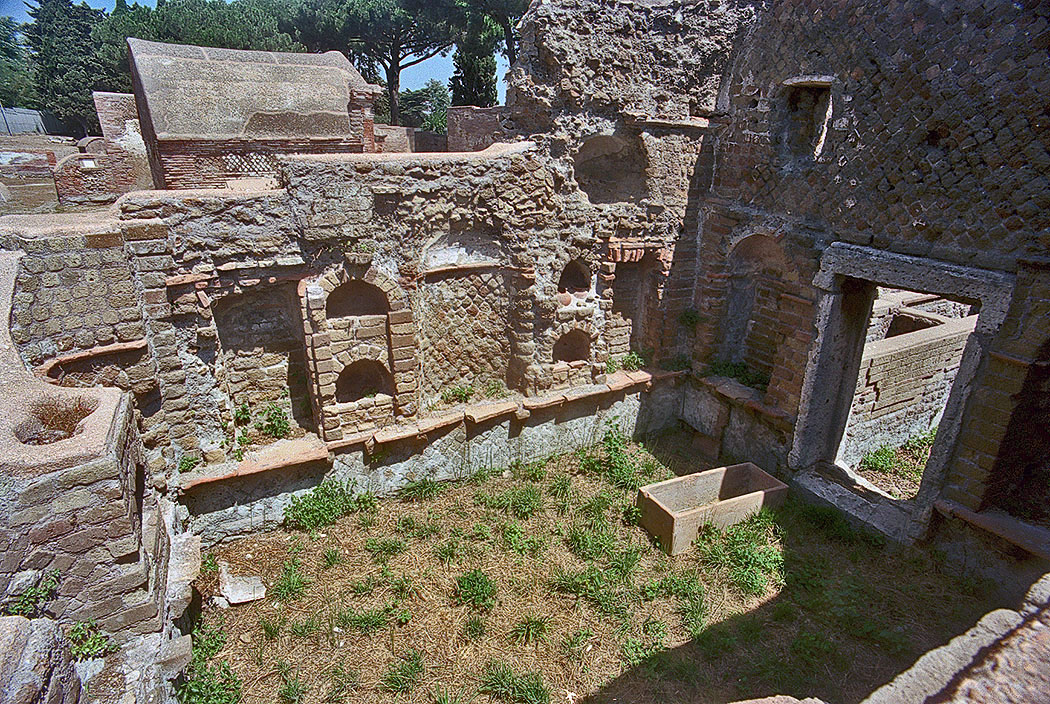
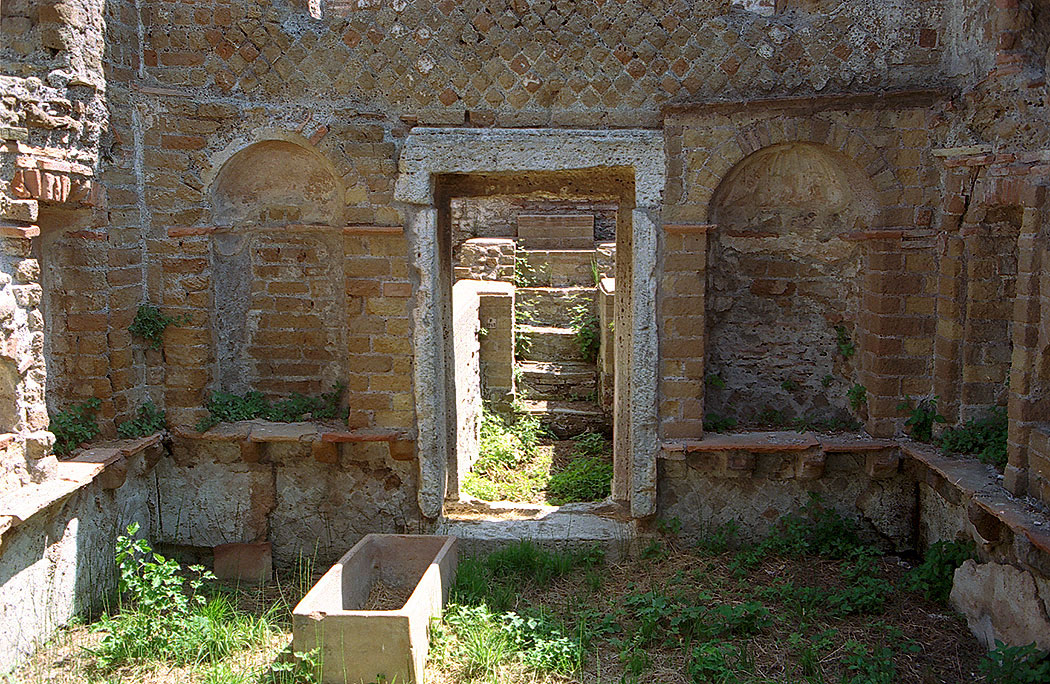
TOMB 85A
During the excavation campaign of 1988-89 a small tomb "a cassone", called tomb 85a, has been found. The tomb is located in the westernmost part of the necropolis and runs parallel with the Via Severiana. In a later time an aedicula has been attached on the long side, facing the Via Severiana.
This aedicula has a triangular tympanum on which the following inscription has been found:
D(is) M(anibus)
P(ublius) SILANVS PROTVS
APHRODITE PIENTISSIMAE
BENE MERENTI FECIT
VIXIT ANN(is) XVII
MENSIBUS V
The grave was built by Publius Silanus Protus for his very pious and devoted Aphrodite, who passed away at the age of 17 years and 5 months.
Tomb 85a is now again covered with sand and can't be seen.
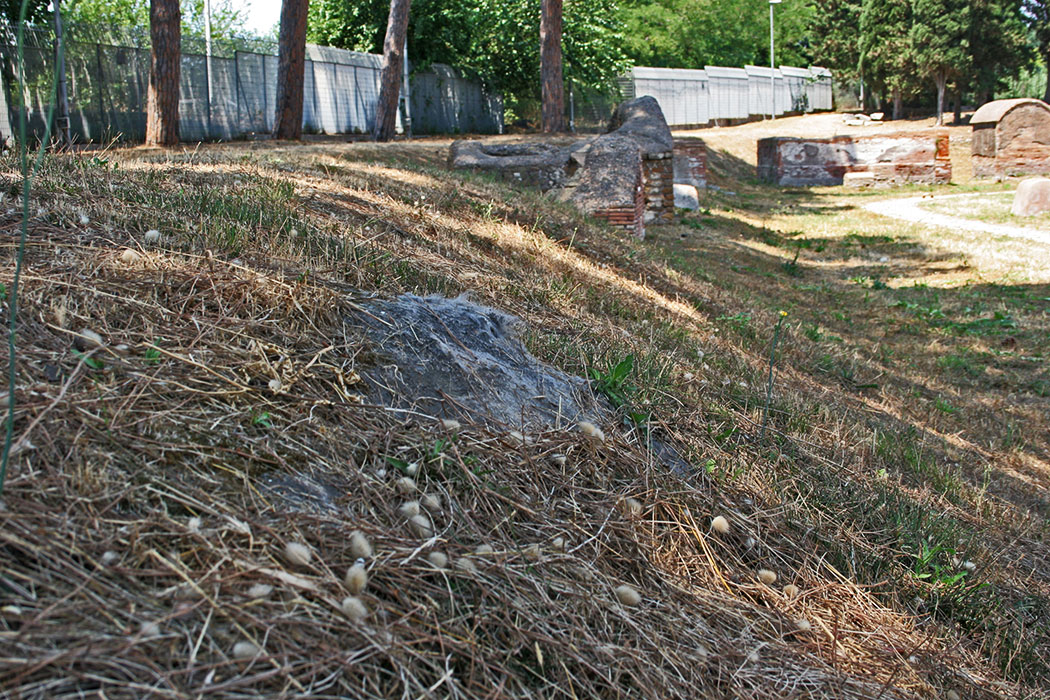
- Sources
- Russel Meigs - Roman Ostia, At the Clarendon Press 1973
- Guido Calza - Necropoli nell'Isola Sacra'(1940)
- Dr. Jan Theo Bakker.
- Hilding Thylander - Inscriptions du port d'Ostie (Lund C W K Gleerup 1952).
- Ida Baldassarre, Irene Bragantini, Chiara Morselli and Franc Taglietti - Necropoli di Porto, Isola Sacra (Roma 1996).
Isola Sacra Index (D)

Speciale sectie over de Romeinse begraafplaats van Portus (Engels)....
Weiterlesen ...Leptiminus (Englisch))
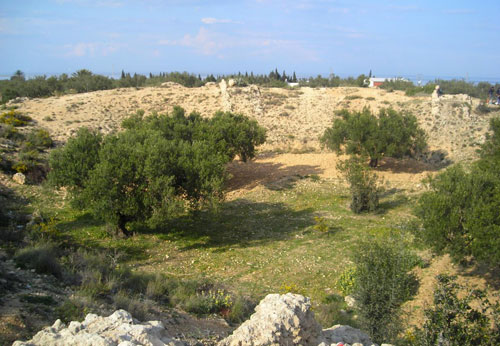
At the site of present-day Lamta on Tunisia's east coast, there was already a port city named Leptis Minor ....
Weiterlesen ...Römisches Seehandelsrecht (Englisch)

Roman law is the finest monument that Rome bequeathed to Western Europe....
Weiterlesen ...Sullecthum (Salakta) Englisch

In the Sahel, in the Tunisian province of Madhia, we find by the sea the small town of Salakta....
Weiterlesen ...Colonia Julia ad Turrem Libisonis (Englisch)

.....probably founded by Julius Ceasar around 46 BC, was located in the north-west of Sardinia.
Weiterlesen ...
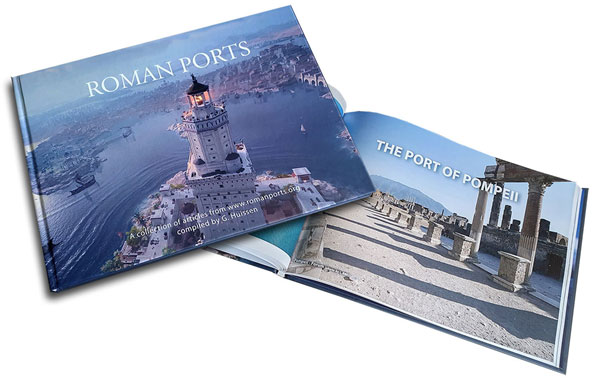
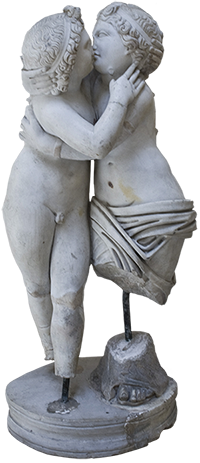 We are committed to providing versions of our articles and interviews in several languages, but our first language is English.
We are committed to providing versions of our articles and interviews in several languages, but our first language is English.